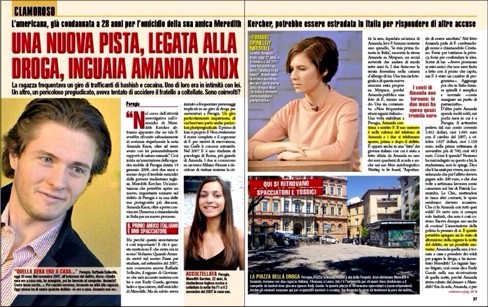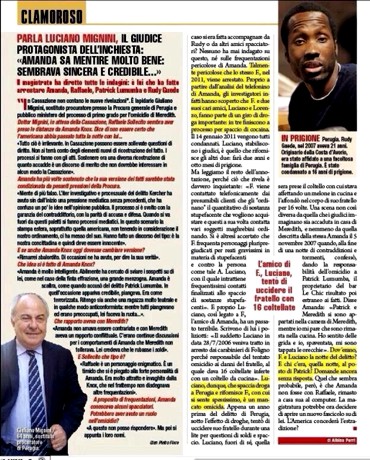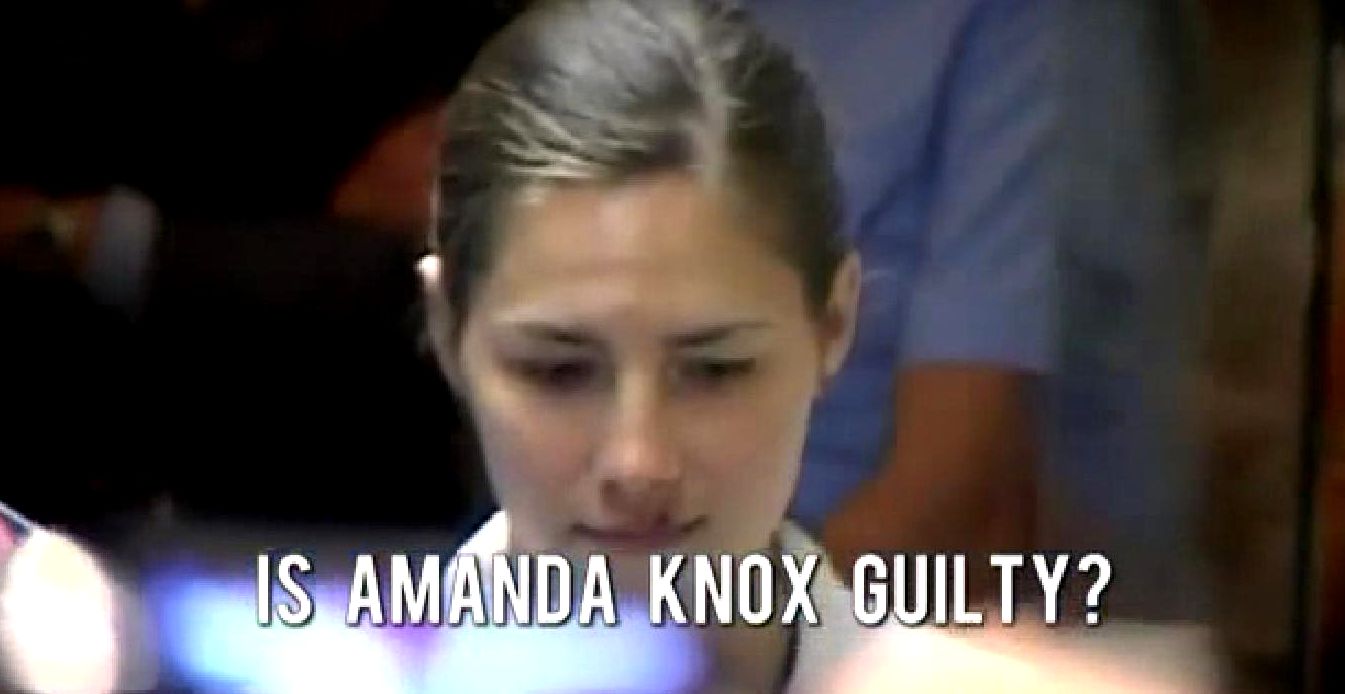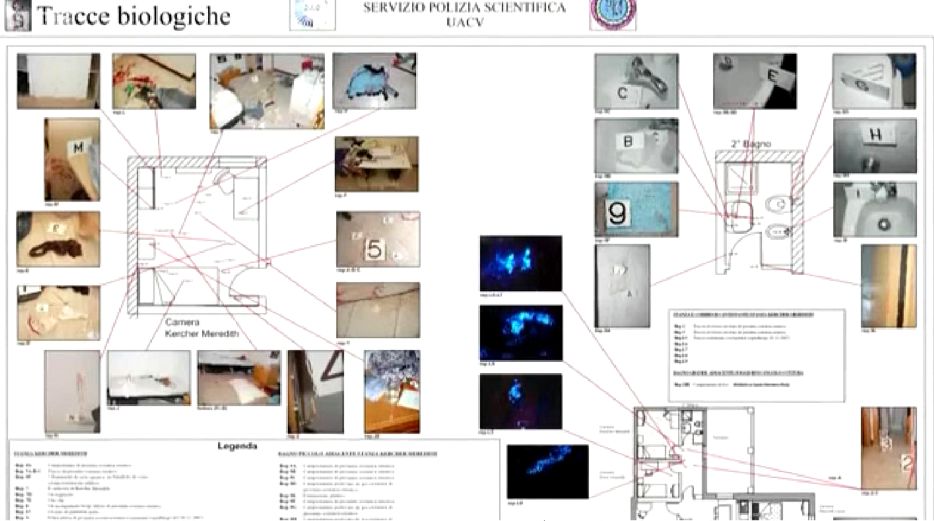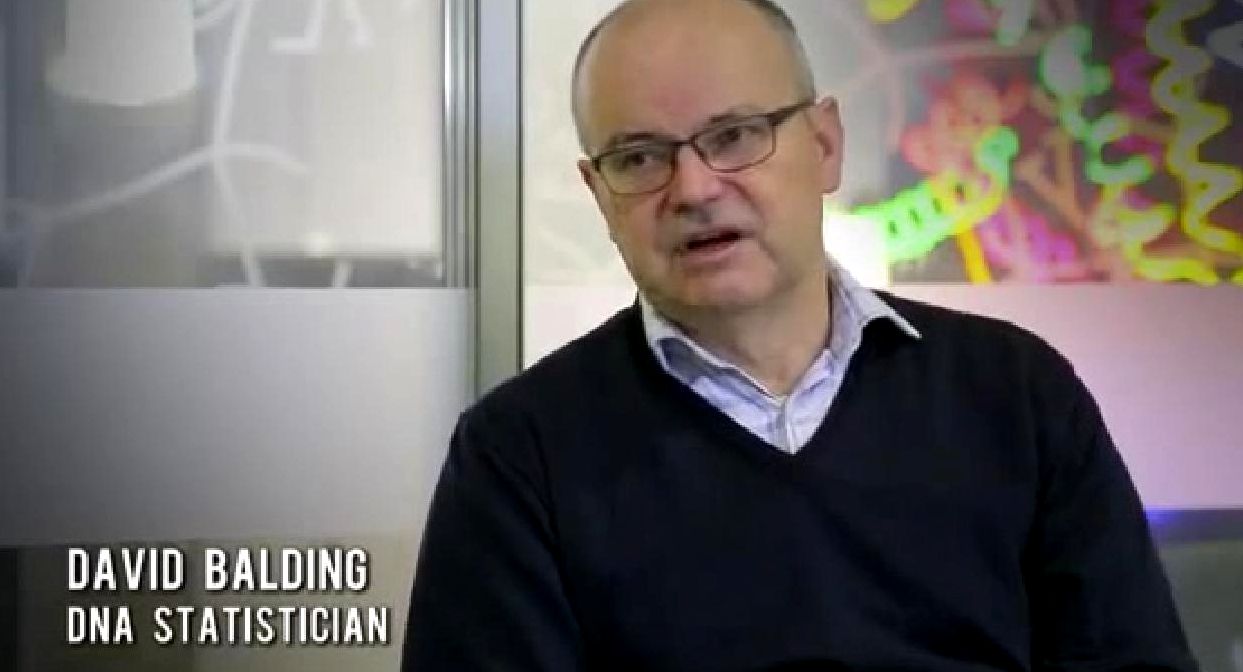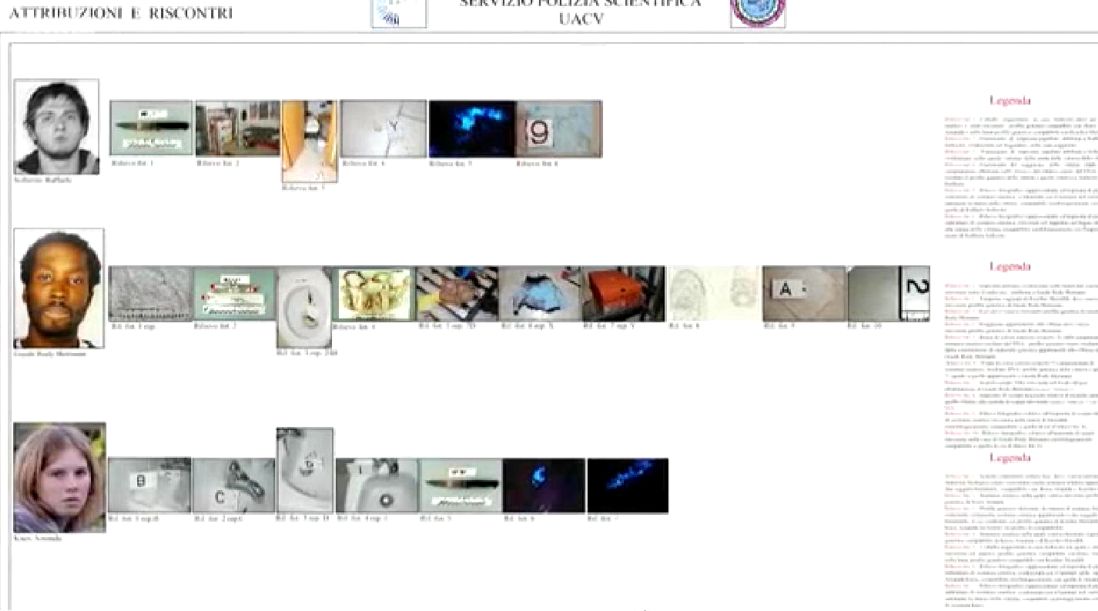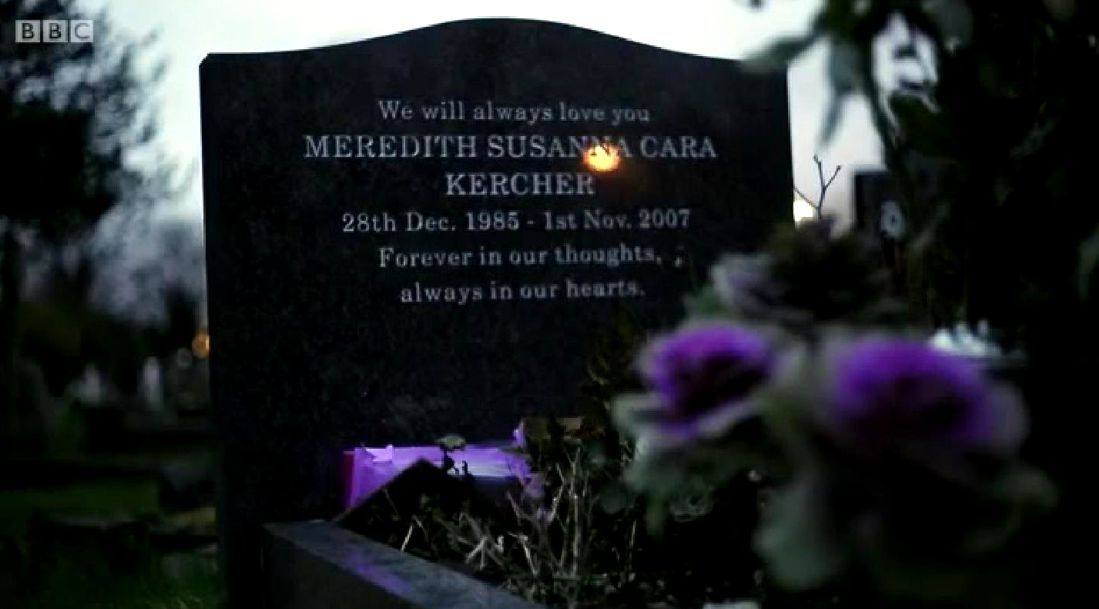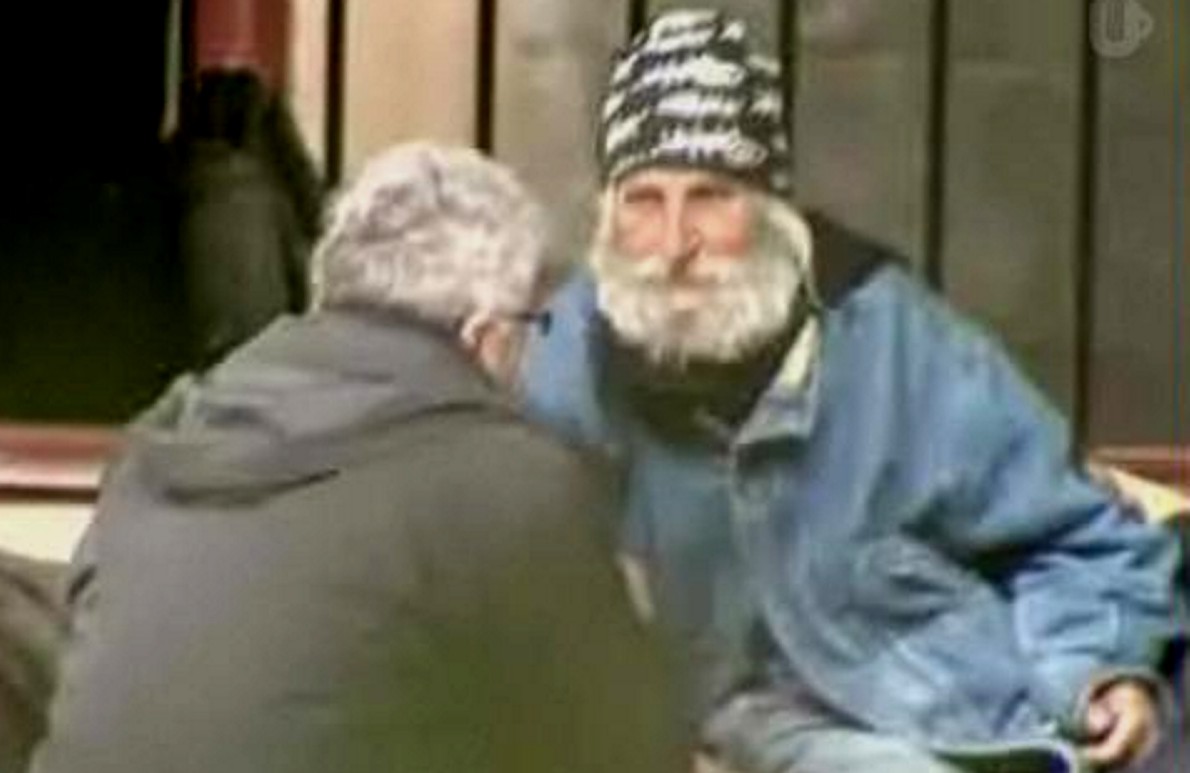
Category: Excellent reporting
Tuesday, July 29, 2014
Italian Reporting Of Prolonged Knox/Cocaine-Dealer Connection; Media Digging
Posted by Our Main Posters
1. How Drug Use Was Addressed At Trial
The story of Knox’s drug use clearly has legs. But whoever is driving it, the trial prosecution is not - they are simply sitting back and watching.
Police and prosecutors have never driven the perception that Knox and Sollecito were stoned on the night when they attacked Meredith. Judge Micheli wasnt keen on this possible “out” and besides they have never had a reason to.
It was in fact the defenses who drove the drug-use argument. Knox admitted to police on 5-6 November 2007 to marijuana use, and so did Sollecito. He already had a minor record of cocaine possession. Both tried to use the argument at trial that they were indeed stoned. But that was only to explain major discrepancies in their statements, not to say that drugs helped to fuel the attack on Meredith.
The defenses had an opportunity with Judge Matteini, the guiding magistrate from late 2007 though to Judge Micheli’s arraignment in October 2008, to try to seek lesser charges due to impaired capacities. But either they did not want to, or they were prevented by the families from doing so.
At trial in 2009 the prosecution remarked that the two were suspected to have been using cocaine (the symptoms seem to us pretty obvious) but the defence simply shrugged at this and did not contend it.
Judge Massei never mentions amphetamines. Two defense experts were brought in to try to convince the Massei court that the admitted drug use had fogged their clients’ brains. Judge Massei simply recorded this doubtful claim in his sentencing report. He gave the perps no breaks based on this reasoning.
]page 393] On the effects of drugs of the type used by Amanda and by Raffaele, such as hashish and marijuana, [we] heard the testimony of Professor Taglialatela who, while underlining the great subjective variability (page 211, hearing of 17 July 2009) specified that the use of such substances has a negative influence on the cognitive capacity and causes alterations of perception (pages 201 and 207) and of the capacity to comprehend a situation (page 218).
In his turn, Professor Cingolani, who together with Professor Umani Ronchi and Professor Aprile, had also dealt with the toxicological aspect (see witness report lodged on 15 April 2008, pages 26 and following), responding to the question he had been asked as to whether the use of drugs lowers inhibitions replied: “šThat is beyond doubt”› (page 163 hearing of 19 September 2009), while correlating that effect to the habits of the person [on] taking the drugs. Raffaele Sollecito’s friends had furthermore stated that such substances had an effect of relaxation and stupor.
2. New Reporting On Knox/Drug-Dealer Connection
Below is the new Giallo report on a connection between Knox and drug-dealers kindly translated by our main poster Jools. Note that the main drug dealer Frederico Martini (who is “F” below) and others were convicted back in 2011 and the connection to Knox was reported then in the Italian press, though not in the UK and US press.
The main new fact here is that Giallo has the dealers’ names. Giallo makes clear it obtained the names legitimately from open police records, not from the prosecutors back at trial. Dr Mignini merely takes note of the names which Giallo itself provided and he doubted that Knox would now become truth-prone.
Clamorous [Sensational/Scoop]
The American woman already convicted to 28 years for the murder of her friend Meredith.
A NEW LEAD, LINKED TO DRUGS, PUTS AMANDA KNOX IN TROUBLE
The woman was hanging around a circle of hashish and cocaine traffickers. One of them had intimate relation with her. Another, a dangerous criminal offender, had attempted to kill his brother with a knife. Are they implicated?
“During the course of the investigation into the murder of Meredith Kercher we have confirmed that a person whose initial is F. would occasionally supply drugs to Amanda Knox, as well as having a relationship with her supposedly of a sexual nature.” So begins an [official note] annotation of the Flying Squad police in Perugia dated January 19, 2008, two and half months after the terrible murder of the young British student Meredith Kercher. An annotation that could open a new, worst-case scenario on the Perugia murder and on one of its most talked-about protagonists, Amanda Knox, besides making it possible to convince the USA to send her back to Italy for a new trial.
But why is this annotation so important? And who is this mysterious F. that is now entering the scene? Let’s see. When Amanda came to our country to study, in September 2007, did not yet know Raffaele Sollecito, the guy from Giovinazzo who will be accused together with her and Rudy Guede, a thief and drug dealer, of the murder of Meredith. But she soon started to hang around characters implicated in a drug ring for university students in Perugia. A particularly disturbing entourage of whose members included dangerous multi-convicted felons. The first one is precisely F. We will not disclose his full name or F’s last name, for reasons of discretion, but GIALLO knows them.
In 2007, F. is a student of psychology from Rome, much older than Amanda. The two meet on a Milano-Florence train and decide to visit the city together in the evening, Knox having gotten rid of [her sister] she and F. smoke a joint together. “My first smoke in Italy,” says the same Amanda on MySpace, a social network site that was popular seven years ago. The two end the Florentine evening in his hotel room. Photo evidence of this new friendship was formerly on Myspace, because Amanda publishes a photo of F., half naked. An aunt commented: “Do not date strange Italian guys.”
Once she settled in Perugia, Amanda continues to have contact with F. His number is in Amanda’s phone book, and they both frequently called each other, before and after the murder.
F., also appears in a “list” of Italian guys she slept with which was compiled by Amanda on one of her big school notebooks and also in her autobiographical book Waiting to be heard. In the book Amanda talks about F. but changes his name and calls him Cristiano. Maybe to protect their privacy, maybe to obfuscate opinions. She writes of him: “I promised my friends that I would not end up sleeping with the first guy that comes by, but F. was a change of plans.” Further adding that in Italy smoking joints is simply normal, “like eating a plate of pasta.”
On the other hand Amanda spends a lot of money in the several months she’s in Perugia. In September, she draws out $ 2,452 from her bank account, that’s 1,691 euros. How did she spend it? No one has ever investigated this, and she does not explain it. She says she used the cash for living [expenses], but considering that the rent she had to pay was only 300 euros, and that twice a week she worked as a waitress in the bar of Patrick Lumumba, Le Chic, putting more cash in her pocket, the [living] expenses seem really excessive.
What does Amanda do with all that money? For sure she does not buy only hashish, which is not so expensive. Was she, then, using cocaine? The [police] annotation makes you think of it. And this could explain both the state of alteration of the girl on the night of the murder as well as a possible motive. Amanda that evening returned home to get some money to pay for the drugs, and she encountered Meredith? The girls had a fight, as Rudy Guede says in his reconstruction of that night, why, did Amanda steal Meredith’s money? Was Amanda on her own, or maybe she made sure she was accompanied by Rudy or other drug dealing friends?
No one has ever investigated this, or Amanda’s dangerous acquaintances. So dangerous that the same F., in 2011, was arrested. To be precise that started from the analysis of Amanda’s mobile phone, police investigators found that in fact F. and two of his close friends, Luciano and Lorenzo, were part of a major drug ring: all three ended up on trial for selling cocaine.
On January 14, 2011 they were all sentenced. The court judges established that Luciano was the one that supplied the other two: He was to serve two years and eight months in prison.
But let’s read the rest of the police annotation because what this reveals is really disturbing: “F. is contacted by phone by the presumable clients placing an “order” with him of the quantity of drugs they want to buy and in turn he contacts various Maghrebi characters ordering. It is also established that F. associates with multiple-convicted offenders of very serious crimes in the matter of drugs, and with persons such as A. Luciano, with whom he maintains frequent contacts aimed at drug trafficking.”
And precisely in this way Luciano, linked to F., a friend of Amanda, has a terrible past. The cops wrote this about him: “The above-cited Luciano on the 28/7/2006 was arrested by the carabinieri in Foligno because he was responsible for the murder attempt of his brother, who gave him 16 stab wounds inflicted with a kitchen knife.”
Luciano, therefore, who sells drugs in Perugia and provides supply to F., with whom he is often in touch, is an unsuccessful killer. Only a year before the murder in Perugia, under the influence of drugs, he tried to kill his brother during an argument over money and drug dealing. Luciano, out of his head that evening, grabbed the knife with which he was slicing a melon in the kitchen and stabbed his brother’s body 16 times.
A scene not so different from what the judges think happened in Meredith’s house, and even from what was described by the same Amanda on the 5 November 2007 when, at the end of a night of contradictions and anguish, confessed giving culpability of the murder to Patrick Lumumba, the owner of the bar Le Chic, who later proved to be unconnected with the facts of the case. Amanda said: “Patrick and Meredith went to Meredith’s room, while I think that I stayed in the kitchen. I heard screams and was scared, I covered my ears.”
Where were, F. and Luciano the night of the murder? And who was there that night, instead of Patrick? Questions still unanswered. What seems likely, however, is that Amanda was not with Raffaele, who was at his home on his computer. The judiciary may now decide to open a new file on her. Will the USA grant extradition?
Here is the translation of Dr Mignini’s interview with Giallo translated by Kristeva.
Luciano [Giuliano] Mignini, the judge leading the investigation, talks “Amanda knows how to lie very well: she seems sincere and credible ...”
[GM] The magistrate has directed all investigations: it is she [Judge Matteini] who had Amanda, Raffaele, Patrick Lumumba and Rudy Guede arrested.
[GM] “In the Supreme Court of Cassation new revelations don’t count” Giuliano Mignini, deputy prosecutor of the Attorney General Office of Perugia and public prosecutor of the first trial for the murder of Meredith [Kercher], goes straight to the point.
Mr. Mignini, pending the Supreme Court, Raffaele Sollecito seems to have distanced himself from Amanda Knox. He claims he is not certain that the American girl has spent the whole night with Sollecito ...”
[GM] “All this is irrelevant. In Court of Cassation only questions of laws can be raised. They do not take into account the new elements of reconstruction of the facts. Trials are based on the acts of the proceeding. Sustaining now a different reconstruction of what happened is a question of merit that does not in any way interest cassation.”
Amanda has repeatedly argued that her version of the facts had been affected by heavy pressures from the prosecutor’s office.
[GM] “Nothing could be more false. The process of investigation and trial proceeding of Kercher’s murder has had from the beginning an unprecedented media pressure, which has confused some ideas in public opinion. The trial should take place with the guarantee of an adversarial process, with equality of prosecution and defense. When one steps out of these parameters one ends up with a trial through the media. In this scenario, the foreign press, especially the American one, not taking into account our legal system, has given its input. They created a discourse that sounds a bit like this:she is one our fellow citizens and therefore she must be innocent. “
And if today even Amanda was to change her version?
[GM] “I would be astonished. She had plenty of occasions to tell her truth”
What was your impression of Amanda?
[GM] Amanda is very intelligent. She cleverly tried to divert suspects from her, as in the case of the staged burglary, a huge lie. Amanda is shrewd like when she accused Patrick Lumumba. On that occasion she appeared credible, she was crying. She looked as if terrified. I believe she’s a very theatrical girl and in a certain way even anti conformist: while everyone was crying and were worried, she was doing cartwheels.
What was her relationship with Meredith?
[GM] “Amanda did not like to be contradicted and had a conflictual relationship with Meredith. There were constant arguments regarding Amanda’s behaviour that Meredith could not tolerate. She believed that Amanda stole her money.”
And what type was Sollecito?
[GM] Raffaele is an enigmatic character. He is a shy young man who was subjected to Amanda’s strong personality. He was very attracted to Knox who in the meantime did not disdain the company of other acquaintances.
About acquaintances, Amanda knew some drug dealers. Could they have had a role in the murder?
[GM] “I cannot answer this” But then writes down their names.
[By] Gian Pietro Fiore
3. Our Comments On The Giallo Report
As observed above, for Italians most of this is actually not new news. The new news is that Giallo now has all the dealers’ names, from the open records of the police.
Giallo’s mention of a possible new trial is presumably connected to this drug-dealing, as the trial for Meredith’s murder and Knox’s and Sollecito’s failed appeal have both concluded, and only Cassation’s endorsement of the verdict is awaited.
Giallo’s references to Guede as a drug dealer and thief are both unproven. He had no criminal record prior to final conviction by Cassation. He was never a police source, and got zero breaks, ever. He was unknown to Dr Mignini until some days after Meredith was attacked and forensics identified him.
4. UK and US Media Get Key Fact Wrong
The UK’s Daily Mail has wrongly claimed that Italy’s Giallo magazine had reported as follows: “Italian prosecutor from Amanda Knox trial gave newspaper list of drug-dealer names associated with American student”.
In their headlines the US’s National Enquirer and Radar Online make the same wrong claim, though they quote enough from Giallo to show how that magazine really re-surfaced the report.
So for now UK and US media get that key fact wrong. This surely wont be the end of it though. The story finally has legs of its own, and clearly the media in all three countries have a willingness to pursue it more.
In the interview also posted on Giallo Dr Mignini doubted that even now Knox will tell the truth - in fact it is hard to see what she can say. We will wait and see.
5. Ground Report Also Gets It Wrong
This shrill report from “Grace Moore” about Guede and Dr Mignini in Ground Report is both seriously wrong on the facts and defamatory - she should try saying that sort of thing about any American prosecutor. “Grace Moore” should find out what the roles of Judge Matteini and Prosecutor Comodi were, and why after a malicious prosecution against him Prosecutor Mignini is riding high on Italian TV - and pouring cold water on satanic claims about any crimes.
Paul and Rachel Sterne, the father and daughter owners of Ground Report which carries well over 100 similarly inflammatory posts, could in theory be charged by both Italian and American prosecutors, as they are an eager party to bloodmoney (a felony), harrassment of the victim’s family (a felony) and obstruction of justice under Italian law for poisoning opinion out of court (another felony).
They need to clean up their site and make some amends.
This drug report continues with new developments in another post here.
Wednesday, February 19, 2014
Our Reviews Of The Painstaking BBC-3 Report First Aired In The UK On 17 February 2014
Posted by Our Main Posters
Review by SomeAlibi
Watching “Is Amanda Knox Guilty” was a funny thing. I suspect for people following the case closely, on either side, it was a sobering experience. Not because it changed perspectives, but simply to see how quickly one hour passed and the necessary trade offs that had to be made to fit within that schedule. The opportunity cost was a level of detail to which in-depth followers have become accustomed.
Just one example: Sollecito and Knox’s partial alibi that they were checking their emails on the night of November 1st was explained as being challenged by two broken computers. Perhaps, (although unlikely to be the material issue) but where was the much more salient fact that their ISP records showed that was conclusively untrue? Where was the challenge: if you say you’re checking emails to establish part of your alibi against a murder and it is shown to be absolutely untrue, what does that suggest…?
There were many other “clinchers” that had to be let go in the name of brevity. But it wasn’t that sort of documentary - it was neither a case for the prosecution or a case for the defence: it put the main suggestions at the level of detail that was possible and it allowed both sides to speak to the points at that level of detail.
I find it interesting that there has been such a howl of bias from those supporting Knox and Sollecito. Objectively there’s no good ground for it: the documentary allowed both sides forward in equal measure and no pro-justice watcher would celebrate it as a pro-conviction piece.
The arguments were balanced, the video, audio and picture quality eye-opening. For those on the other side, their markedly different reaction appears to be that the documentary has broken the taboo that The Evidence Shall Not be Told. The idea that there is an easy-to-consume piece that puts forth the case and defence equally is seen as a disaster.
The campaign for Knox continues to be obsessed, beyond all things, with trying but now failing to make sure the public doesn’t know the basis of the case. For a long time they hoped to drown out the multitude of terribly inconvenient truths within it by screaming “no evidence”. ‘Is Amanda Knox Guilty’ put the lie to that conclusively, but fairly, and now many hundreds of thousands, perhaps soon to be millions will ask themselves why those supporting Knox and Sollecito have had to adopt this tactic at all.
If they really are innocent, why has the case against them been so comprehensively white-washed in the US?
The conclusion, is rather simple and I saw it encapsulated on a large television screen last night with the repeated clips of Amanda Knox and Raffaele Sollecito outside the cottage kissing and “comforting” each other: there for a fraction of a second, shown several times, is Amanda Knox, unable to stop herself glancing at the camera filming her and stealing her gaze away again very quickly pretending she hasn’t.
It’s a look that says everything: furtive, pretending it didn’t happen, immediately covering up in a way that poses a stark proposition: why on earth would you do that if you had nothing to hide? And like so much of the multiple collapsing alibis and non-working answers and the desperately dishonest fingers-in-the-ear “no-evidence” pretence of those supporting her, is a proposition that can withstand no scrutiny.
Review by SeekingUnderstanding
What a relief to watch a very clear and unbiased narrative. The quality of the visual information was top rate - seeing so much original footage, and presented as it was in a logical time sequence.
Even though I was already familiar with the evidence, including the photographic material, I found it very helpful to see it all presented in this way. I appreciated, too, hearing and seeing the excerpts in original Italian (along with English translations). It added even more authenticity.
I hope that, at long last, this will have helped some - or hopefully many- people to see that the two ‘camps’ in this case do not divide into AK supporters and AK ‘haters’. There are the FoA and their followers ...and there are the others who seek the objective truth and justice.
If hate has been generated in some quarters, then the Knox (and Sollecito) camps need to look to themselves and their own behaviour. This programme was important in the tone it set.
I actually found it to be quite lenient towards the defence on a number of counts.
There were several instances where the defence point of view could have been strongly countered by known and established facts, but, bending over in fairness, these were left unanswered.
Here are just four instances :
1) In the discussion around the blood and DNA left in the bathroom - Dr. Gino’s assertion that ‘the blood/DNA ‘could have come from anywhere’ might have been countered with AK’s own declaration that the bathroom was previously clean. Dr. Gino also suggested a very improbable scenario of ‘it could be saliva’ (on the bidet?). Cassation emphatically said that it must be shown HOW any suggested contamination could have occurred.
2) There was a missed opportunity in discussing the knife presumed to be the murder weapon to mention Sollecito’s lame, unreal excuse of ‘Meredith pricked her hand’ etc.
3) Anne Bremner stated ‘Amanda could not have turned overnight…into a murderer’. Attention could have been drawn to many things, both physical events (her predilection for cruel pranks, including a staged burglary in the US, and wild parties, etc), and also many psychological indicators that would have clearly shown how her behaviour has, in fact, demonstrated consistency.
4) In the discussion re the bra clasp, the delay partially being caused by the defence themselves was not mentioned. Also, detailed discussion re the one bare footprint on the bathmat was omitted.
Since there is, in fact, so much evidence, it must have been difficult to chose and balance what did go into the hour long programme. All in all, I feel Andrea Vogt and her team worked hard, and did very well to let the facts speak for themselves.
I hope it will lay a few fictions and myths to rest.
Review by Earthling
What is the “Amanda Knox trial” (really the Meredith Kercher murder trial) really about? Is it about an innocent 20-year-old pretty white girl being railroaded by the medieval Italian justice system?
Or is this actually a murder trial, about the fact that a beautiful, intelligent, ambitious young woman, innocently trying to improve her life by study abroad, was brutally murdered?
I believe it’s the latter, and the BBC3 production gives us one of the first truly balanced reports on this trial.
The filmmaker starts from the beginning, and takes us through the murder, investigation, and various trials and appeals up to the present day. Instead of the breathless “Perils of Penelope” tone (toward Amanda Knox) that most such previous “documentaries” have taken, this one takes a sober look at the actual evidence.
Did you realize that there are luminol-revealed bare footprints in Knox’s size in the apartment? Luminol reveals blood and a few other substances; but those substances can be ruled out because the test was done six weeks after the murder, by which time those substances would have dissipated.
Blood doesn’t dissipate. This documentary shows you those bloody footprints in all their creepy glory, something never shown on American TV before.
“Is Amanda Knox Guilty” also speaks of the actual DNA evidence in the cottage linking Knox to the murder, including five mixed-DNA spots (Knox and Kercher) that tested positive for blood. Both prosecution- and defense-oriented experts are allowed to comment on this evidence, and the viewer is allowed to make up his or her own mind.
My one criticism is that a lot of the evidence against Knox (witness statements, cell phone data, fake break-in) is skimmed over or not even mentioned. Also, because the documentary quotes Rudy Guede’s position at length without any contradictory narrative, it is confusing as to whether the filmmaker might have believed him.
In the end, the filmmaker says, he was convicted of participating in the group murder. However, a stronger statement against his “I’m entirely innocent” defense would have been good.
Other than these quibbles, this is the best documentary on the Meredith Kercher murder case that I have ever seen.
Review by ZiaK
I watched the BBC programme on the Meredith Kercher case hoping for a more balanced view of the case than has been presented in the English-speaking media to date.
The documentary does present some of the evidence against Knox and Sollecito - including the bloody footprints, the mixed blood/DNA traces in the bathroom and corridor, the bra clasp, the knife DNA evidence, the strange timings of phone calls to police, the unlikelihood of the “break-in” being anything other than staged - but omits to point out that none of the other flatmates’ DNA was found in the blood traces, so saying that “it’s because Meredith and Amanda shared a flat” is misleading.
Nor does it point out that, although the murder knife was found in Sollecito’s flat, none of HIS DNA was found on it: it had only Amanda’s and Meredith’s DNA.
The programme didn’t cover the cell-phone evidence, showing that neither Knox nor Sollecito were where they said they were, at the times that they claimed. The programme also repeated the “Friends of Amanda” PR soundbites, such as “there was no evidence of Amanda in the murder room” - whereas the fact that her footsteps tracked blood OUT of the room are actually evidence of her having been present IN the room before it was locked (i.e. at the time of the murder).
Furthermore, in my opinion, the narrator’s voice seemed to evince sympathy towards Amanda, rather than describing events with a passive or objective tone of voice.
As one of the translators who has participated in translating case documents (such as the judges’ reports describing why they came to their decisions), I am only too aware of the extent of evidence against Knox and Sollecito, and I would like to see knowledge of this evidence become more widespread throughout the English-speaking world.
The BBC programme is a step towards this, but in my mind, only a very small step. I hope the pace will pick up soon, and more objective and extensive knowledge of the true facts of this case will be made available to everyone so they can form a rational opinion of the case based on true understanding.
Review by Cynthia
I’ve just watched this, and it’s very good - with a huge amount of footage hitherto unseen (directed by Andrea Vogt).
For what it’s worth, I note the following points:
1) There’s no mention of Meredith’s friends who heard Amanda say ‘she fucking bled to death’ before the fact was known to anyone else. Perhaps they didn’t testify, being too distressed? If so, it’s a great pity, because it seems a veritable clincher that hasn’t been used at all.
2) The bra DNA arguments are quite extraordinary. If we can determine that we all have Neanderthal DNA (tho’ I know a lot of American fundamentalists don’t believe that mankind goes back more than 6,000 years!) I can’t for the life of me see why DNA would be unusable after a poxy delay of 12 days ...
3) The argument that the Luminol traces may indicate not barefoot treading in blood but in bleach seems absolutely unbelievable to anyone who does housework (like me!) Bleach is horrible stuff, and you really, really don’t want to be getting it on your bare skin. Even Amanda, with her vestigial domestic skills, would have noticed if she’d trodden in it.
4) Bremner says Amanda was an honor student. She wasn’t; she had funded herself (not that that’s discreditable). (Also, are honor students unable to write cursive script? The shots of her handwriting show that she can’t do joined-up writing. [Or thinking.] I don’t know whether the phrase exists in American English, but not doing joined-up writing is a term of great intellectual contempt in English.)
5) We saw Amanda’s ‘mask’ speech. This is really interesting - who would even think that masks were being put on them if they weren’t using them themselves?
6) The programme mentions the little-reported fact that another, smaller knife found at Sollecito’s also had Meredith’s DNA on it.
7) The film omits to mention Hellman’s lack of any experience in criminal trials.
8) Every shot of Amanda in the film has her talking about ‘me’ and ‘I’. She never, ever mentions Meredith - it’s all about HER suffering. She never even says ‘the murderer is out there - I wish you’d stop persecuting me and get them’.
Presumably this is because Guede is supposed to be the sole murderer - and nobody seems in the slightest bit worried that there’s no murder weapon with HIS DNA on it! (Yes, there are his turds - but that wasn’t what killed Meredith.)
9) FOA has used the fact that the recent jury took 12 hours to deliberate over the verdict as an indication that they couldn’t agree. But why not just that they were being extremely careful and re-examining everything?
10) Finally, just an observation: Maresca speaks the most beautiful Italian - you can hear every word calmly flowing past.
Review by Miriam
Much appreciated. Outside of the Porta a Porta transmissions on the case, the best I’ve seen.
I understand they had to give both sides, but I felt that the defense came out on the losing side. I thought it funny that it was implied that since they only tested for blood it could of been saliva.
I don’t believe even her supporters would argue that Knox was so quirky as to brush her teeth in the bidet! Or maybe she spit in the bidet, in which case Meredith would have had every reason to complain about her bathroom habits!
Now if only this or something like this would air in the U.S.
Review by Sara
This is actually one of the most objective and well-researched reports I have seen on the case and I am very happy that BBC has managed to be so unbiased.
It presents both sides of the story equally well and does an excellent job of countering the extremely silly “no evidence” argument that the FOAkers like to repeat at equal intervals.
Regardless of what one believes, I think the documentary will at least succeed in convincing most people that there is indeed sufficient evidence against the two of them, and Italy’s judicial system is not crazy to convict people without any evidence.
My favourite part was when the defense DNA expert (can’t recall her name) tried to explain away the mixed blood evidence by saying that one of them could have had a nose bleed, and the other could have cut her hand in the same place leading to mixed blood.
Come on already, what are we? Kindergartens making excuses for not handing in homework? What is the possibility that both of them would bleed in exactly the same places not once or twice but multiple times? I think anyone with a bit of sense can see that they are clutching at straws.
However, I was a bit disappointed that few things were missed out. For instance, the fact that Guede’s footprints led straight out of the house, the fact that Amanda’s lamp was found without any obvious reason in Meredith’s room, Amanda’s extremely odd midnight call to her mom that she conveniently “forgot”, her million showers despite her concern towards “water conservation” etc.
Sollecito’s multiple changing stories were not really elaborated upon (the story in which he went to a party, the one in which he checked emails, the one in which he pricked Meredith etc etc).
Also, inconsistencies between their accounts of various events could have been pointed out (Was Filomena’s door open or close? Did AK call Filomena from the cottage or from Sollecito’s house? etc).
Witness accounts were not given any screen space either. I think touching upon these would have made the documentary even more impressive.
That said, I understand that the team has done the best they would within the limited time they had, and everything just cannot be accommodated within one hour.
So, all in all, kudos to the team and BBC for a job well done.
Review by Odysseus
I though it was a very competent overview of the case. After so much pro-defendant spin in the MSM (no doubt engineered by the American defendant’s PR outfit), it was refreshing to have a sane, measured and rational presentation. The victim deserves no less.
Congratulations to BBC3 and to the programme makers. It’s good to know that the BBC of blessed memory hasn’t been entirely dumbed-down nor intimidated by “partial outside interests”, the latter being director Andrea Vogt’s own description of the forces intent on muddying the waters in this case.
Tuesday, February 18, 2014
Congratulations To The BBC For A Report Emphasizing The Sheer Extensiveness Of The Evidence
Posted by Our Main Posters
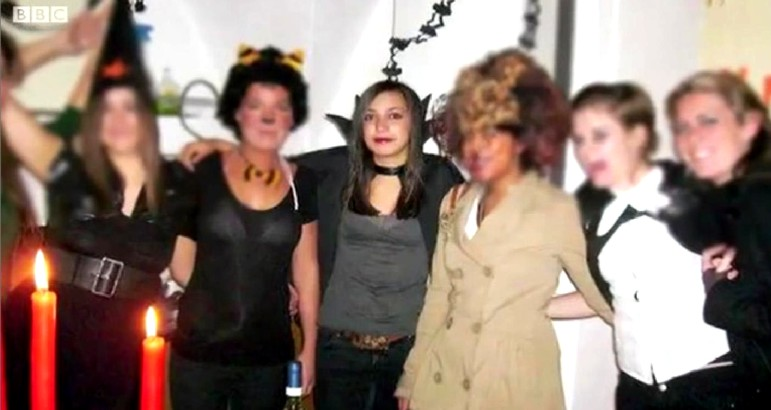
[From the BBC report: Meredith the night before the cruel, deadly attack with her Halloween friends]
This is the painstaking and obviously expensive report by Andrea Vogt and Paul Russell with interviews in London, Seattle and Perugia.
It was aired by the BBC on 17 February. Considerable time is allocated to defense lawyers and experts and the Knox family and Ann Bremner of the FOA taking their best shots at explaining how Knox could maybe have not been involved.
Still, the sheer mass of the evidence remains as the 80,000 pound elephant in the room, lacking any hint of a realistic alternative explanation. Three people committed the horrific attack, including Rudy Guede and two others.
Only Knox and Sollecito remain pointed to by dozens of evidence points as those two others. Not one single evidence point indicates anyone else was involved. The Masssei trial court got it right as the Nencini appeal court just confirmed.
We will enquire if we can embed the hour-long video. But as it may be picked up by US and other foreign media outlets, we will start by simply summarizing it soon. Assessents by those who have already seen it are welcomed.
Friday, February 14, 2014
Hard Questions By Italian Journalist Giuseppe Castellini For Sollecito
Posted by Peter Quennell
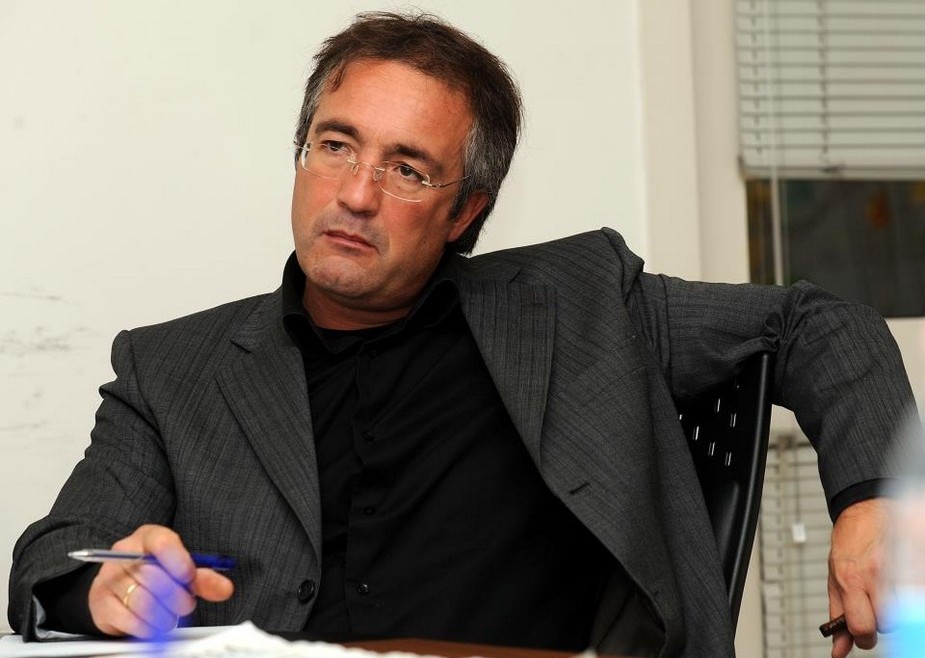
[Above: Giuseppe Castellini of Giornale dell Umbria has long exposed the Knox/Sollecito lies]
1. Overview Of Italian Media Takes
The fast-growing satires of Knox and Sollecito in Italy described in our previous post are not just emerging in a vacuum.
The many tough crime-show comperes and crime reporters in Italy have rarely let Knox or Sollecito get away with any of their lies. One example was when Bruno Vespa, the host of Porta a Porta, Italy’s most popular crime show, forced Francesco Sollecito to admit to Italy that his son lied extensively in Honor Bound. Another example is when Oggi published some of Knox’s lies and they were rapidly exposed. For seemingly endorsing Knox’s lies Oggi will face trial for obstruction of justice.
There are countless other examples where Sollecito and Knox have been exposed as liars. The super-sharp editor of the Giornale dell Umbria, Giuseppe Castellini, has just published this challenge to Sollecito who had absurdly had claimed that nobody ever wanted to ask him any questions in court.
2. Giuseppe Castellini Questions RS
The translation is by Miriam.
Murder of Meredith: a few questions for Raffaele Sollecito
Raffaele Sollecito, found guilty and condemned to 25 years by the Appeals Court of Florence, for the murder of the English student Meredith Kercher (for the same crime Amanda Knox was also found guilty and Rudy Guede is already serving a definite sentence of 16 years) has stated that he was never questioned in court, because no one ever asked him.
For the record and in order to have a complete picture at, it should be remembered that during the investigation, Sollecito twice took advantage of his right to not respond to the questions of the PM Mignini.
So if it’s true that the prosecutors, in all the trials never asked to question him in court, neither did he ask to be, limiting himself to giving several times making spontaneous statements, without being cross examined.
However, this is not the real point. The fact is that Raffaele could not or did not want to respond to the questions of the investigators.
His version was always brought forth in detail by his lawyers, obviously, but that is not the same thing.
Important questions remain to which Raffaele did not answer directly during cross examination by the Prosecutors. Let’s try to summarize some crucial unanswered ones. Who knows if Raffaele will ever decide to respond in detail right here on these pages even though ““ at the moment ““ it seems improbable. We address him directly, sure that he reads these pages.
1. The first time that you were questioned in Questura you said that the first of November 2007 (Meredith was murdered the night between the first and the second of November) after a walk through downtown Perugia (before that you and Amanda have been in the house in via della Pergola). You came home around 08.00pm while Amanda come back much later around 01.00am, you then changed your version saying that you had always been together. Your first statement seem like a distancing from Amanda, in those hours nobody knows what she did, while the second one has a complete different flavor. Why did you radically changed your version?
2. It’s proved by the findings (even if your lawyers contested it) that the computer in your house was activated for about half an hour from 05.32am till little after 06.00am of the second of November. For the experts of the Police it was certainly a human interaction. You, instead declare that you and Amanda were sleeping. So who was it then that was using your PC at that hour?
3. Your and Amanda’s cell phones were turned off at the same time around 08.40pm of the first of November and they were turned on, practically at the same time, a little after 06.00am of the second of November (at that time you received the “good night” sms sent from your father the night before). How do you explain all this?
4. You stated that you were not in the house in via della Pergola. How it is possible that your DNA is on the bra clasp (17 loci that shows your genetic profile, and for the father of Italian genetics, Prof. Vescovi, that with the current processes are not only enough, but more than enough to match your DNA). And why did luminol revealed a bare right foot print compatible with yours, in addition to the one on the bathmat in the small bathroom? (the size of the big toe, just to point out one thing, is just like yours, while Rudy’s is a lot smaller).
5. Why, if Rudy was the only assassin, in the corridor would he cancel only the bare foot prints, leaving in plain sight always his, but left with the shoe print of his left foot? Doesn’t it come to mind that whoever cleaned up the prints thought to cancel theirs (specifically the ones ascribed to you and Amanda) leaving behind those recognizable as Rudy’s?
6. You and Amanda were seen by the homeless Antonio Curatolo late the night of the murder and Amanda was seen by the shopkeeper ““ that knew you well and already saw you with Amanda ““ enter in the shop at about 07.45am to buy something and go back toward piazza Grimana. You and Amanda say that at that hour you were sleeping in your house. Is there something that can demonstrate this, that up to now has slipped away and that would give you the missing alibi?
3. Questions For RS Of Our Own
We have advanced plenty of questions for the evasive Sollecito of our own. Here are seven examples.
- Questions For Sollecito Do You Stand By Your Smear Of Reasonable Doubt In Italian Law?
- Questions For Sollecito Why Claim Guede Did It Alone When Vast Evidence Contradicts That?
- Questions For Sollecito Why So Many Contradictory Explanations Of How DNA Got On The Knife?
- Questions For Sollecito Did Your Father & Lawyers Pre-Approve This Crazed Rant?
- Questions For Sollecito Can You Realistically Account For The Hard Evidence On The Bathroom Mat?
- Questions For Sollecito Katie Couric, Push Back Against Sollecito’s Bluster And False Facts #2
- Questions For Sollecito Katie Couric, Push Back Against Sollecito’s Bluster And False Facts #1
Wednesday, February 12, 2014
Admired Feminist Victoria Brownworth On Knox As Ice-Cold And Media’s Hit & Miss Performance
Posted by Peter Quennell
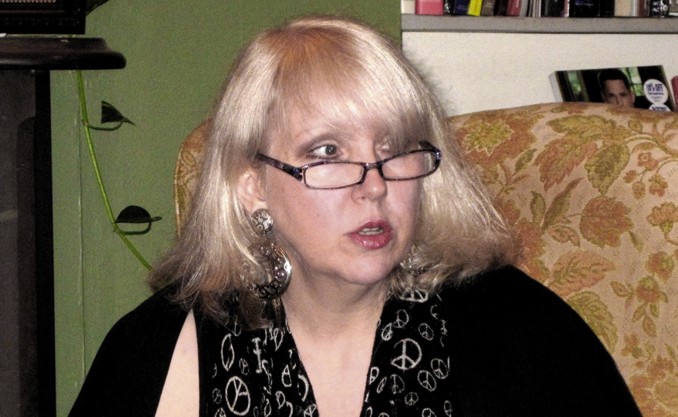
This is a key part (please read it all) from the great Victoria Brownworth’s Trial by Media - The Case of Amanda Knox
Is Knox guilty? Two long, complicated trials have said yes. Knox’s massive PR machine”“much like Simpson’s”“says no. That PR machine also ignores the fact that Knox falsely accused a black man of the murder and that he spent time in prison solely because of her accusation that she saw him take Kercher into the bedroom and heard her scream””while she, Knox, did nothing.
Angelina Antoinetti, Knox’s personal prison guard, told reporters after the conviction on Jan. 31 that Knox has reinvented herself for the media.
“Now she’s become this TV star, who cares passionately about what happened to her “˜friend’ Meredith Kercher, and wants the truth to come out. She’s painting herself as a warm, loving human being, but the Amanda I knew was so composed, I never saw her suffering and other prisoners and staff called her the Ice Maiden.”
Antoinetti said Knox “never, ever talked of Meredith or expressed emotion about her death. Whenever Meredith’s face came on TV she didn’t want to know and didn’t respond. She was impenetrable. Underneath the veneers she remains the same controlled woman I knew well in Capanne prison. She was so composed, I never saw her suffering.”
Antoinetti said that Knox “became attached to me. I opened her cell each morning and shut her in at night. She liked English music like the Beatles and always sang. She had guitar lessons, too.”
Knox was “unlike any other prisoner,” Antoinetti said. “I’ve never seen another girl like her, especially so young. She’s magnetic and manipulative. She had no emotions for people, only books. She never talked to other prisoners, she was only concerned about her world. Even when they freed her after the appeal, she didn’t speak to a single person she had just spent four years with, just walked out.
That’s not human, is it?”
And that is the question for many: Who is the real Amanda Knox?
As with the Simpson trial, the media has played a huge role in the Knox case. The U.K. papers labeled Knox “Foxy Knoxy” while the Italian papers played up Knox’s sexual history and the more lurid sexual elements of the case”“the assertion that the murder was a drug-fueled sex game gone wrong.
In the U.S. ABC News has been a virtual PR firm for Knox, devoting hours of time on both 20/20 and Good Morning America as well as the actual ABC Nightly News promoting Knox’s innocence. Diane Sawyer did a heavily promoted hour-long interview with Knox when she was released from prison in 2011. And when the Jan. 31 conviction came in, on her ABC Nightly News broadcast, Sawyer led with “the American girl” Amanda Knox”“even though Knox is 26. A full six minutes of broadcast time was devoted to Knox”“including video of her singing and playing guitar. When has a national news network treated a twice-convicted murderer in such a manner?
The two media portraits of Knox”“the sex-obsessed sexual manipulator she’s been portrayed as being by the European media and the pristine girl-next-door innocent-abroad the U.S. media has presented conflict, obviously. But what has been lost in the emphasis on Knox as the victim of the story is the actual murder victim, Meredith Kercher.
Wednesday, September 18, 2013
Breaking News From Italy-Based Andrea Vogt On The Aviello And Knox/Sollecito Court Actions
Posted by Peter Quennell
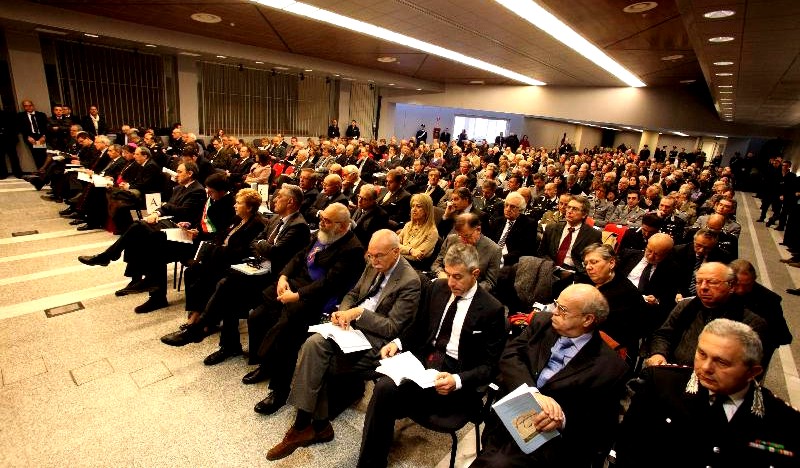
[A Florence courtroom similar in size to courtroom 32 which is assigned for the appeal]
Andrea Vogt kindly provides these details on the Knox/Sollecito appeal, the Aviello trial, and the increasingly desperate Knox and Sollecito PR.
1) Knox And Sollecito Appeal
In the first hearing on September 30, the court will decide on a fixed schedule as well whether or not to accept any defense evidence requests, such as new DNA testing or witness statements. The prosecution has also made two additional requests to the court: 1) request for another forensic review of knife to see if a small third trace that was never tested before can be examined. Experts in the first appeal deemed it low copy number and rejected requests to test it. 2) request to hear testimony from Luciano Aviello.
All our past posts on the Florence appeal can be found here and all our past posts on the DNA can be found here.
The defenses are said to have filed monsters of requests for wide scope - a virtual retrial with the defenses in prosecution mode - complete with bizarre argumentation against the rulings of Cassation. None of the defense lawyers have ever won a case before Cassation. This sure seems like a losing move as Cassation is insisting on tight focus.
2) Luciano Aviello Trial
At the heart of Aviello’s trial in Florence are likely to be the revelations by inmate Alexander Illicet from Serbia Montenegro, who testified that Aviello had agreed to pin the murder on his brother in exchange for 158,000 Euros ““ money Aviello desperately needed to pay for a sex change. Aviello himself later took back statements he made on the stand, saying he had been bribed.
The backstory to the potentially very explosive Aviello trial can be found here. If he cracks under pressure (as expected), he may spill the beans on the Sollecito family, on the defense lawyers Maori and Bongiorno. and on the judges Hellmann and Zanetti,
Potentially all could face prison. No family goes in for bribing of judges and witnesses (along with numerous other dirty tricks) if their little pride-and-joy is truly innocent.
3) Erratic Knox PR
Knox recently was featured in a number of print exclusives to the very U.K. tabloids her family blamed for sensationalizing her case at the outset. She then did her own exclusive video interview in Seattle to the same Italian columnist [used by Sollecito].
Knox, Sollecito, and Oggi are all already being investigated for contempt of court, as explained in all these past posts. For such charges, depending on the seriousness (and serial, seemingly unstoppable false accusations of crimes is pretty serious), prison sentences if found guilty might amount to ten years. That would be on top of any new sentence out of the Florence appeal which this time is likely to be 30 years.
Planet Earth to Amanda Knox: Smart move #1 could be to put aggravators David Marriott and Chris Mellas on the back burnder.
Friday, May 03, 2013
The Amanda Knox Book: Good Reporters Start To Surface Amanda Knox’s False Claims In Droves
Posted by Our Main Posters
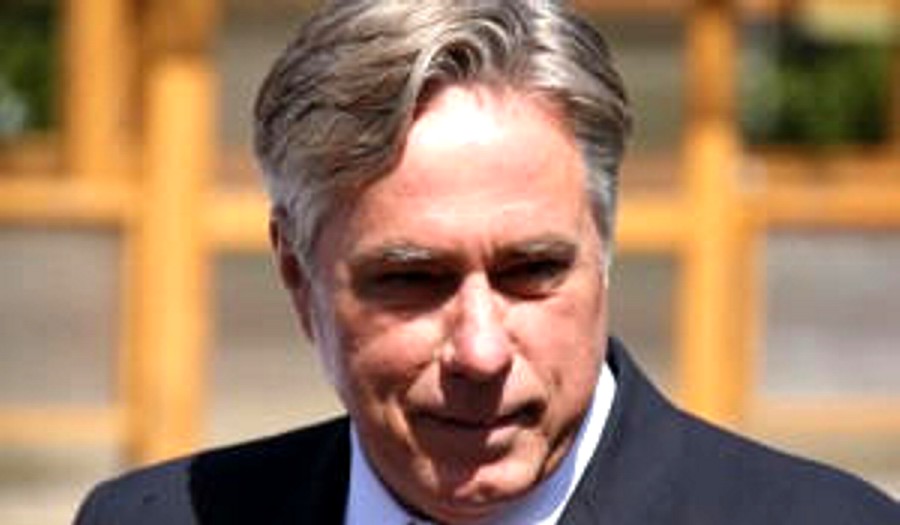
[American Ambassador to Italy David Thorne whose reports contradict Knox’s prison claims]
Did ANYBODY think to check Knox’s book for criminal defamations and false claims? Take this glaring “mistake” from page 248.
During the rebuttals, on December 3, each lawyer was given a half hour to counter the closing arguments made over the past two weeks. Speaking for me, Maria criticized Mignini for portraying Meredith as a saint and me as a devil
Really? Prosecutor Mignini said that? So why did the entire media corps report that it was said by Patrick Lumumba’s lawyer Carlo Pacelli? As the BBC reported:
[Mr Pacelli] added: “Who is the real Amanda Knox? Is it the one we see before us here, simple water and soap, the angelic St Maria Goretti?”
“Or is she really a she-devil, a diabolical person focused on sex, drugs and alcohol, living life to the extreme and borderline - is this the Amanda Knox of 1 November 2007?”
So even Mr Pacelli didnt compare Knox to Meredith, or simply call Knox a she-devil to her face. He asked rhetorically if she was a she-devil or a saint. Not exactly unheard of in American courts.
And remember he was addressing someone who would have been quite happy to see Patrick put away for life, cost him two weeks in a cell, entangled her own mother in a cover-up, destroyed Patrick’s business and reputation world-wide, still hasnt paid him money owed, and for lying about him served three years.
Prosecutor Mignini in fact never called Knox anything at all. We can find no record that he did. Again and again he has denied it. And he had no personal need to prosecute Knox, and certainly no need to frame her, despite many pages Knox devotes to trying to prove the reckless claim that he did.
Another false claim: Knox’s claim that Prosecutor Mignini invented the notion of a satanic cult to explain the Monster of Florence murders, also made by Sollecito, is totally untrue.
Dozens of others had suspected and talked about a satanic cult for YEARS before he investigated one loose end in the case. And both that theory and that investigation are back on track - at the recent order of the Supreme Court.
Another false claim: Knox devotes pages to trying to make herself look good on the witness stand at the trial. But Italians who could follow in Italian in real-time ended up suspecting and despising her performance up there. Read what they saw here and here.
Inspired by such conspicuous false claims as these, various reporters have begun to dig. We posted on Knox’s false claims about her prison time and the many disproofs. Italy-based reporter Andrea Vogt uncovers some more.
Knox’s memoir is a vivid personal account of the difficulties of prison life in Italy, complete with claims about inappropriate behaviour by staff. But Knox herself once painted a different picture.
Other documents - including writings Knox penned in her own hand while incarcerated, case files and state department records - conjure up quite another impression of a very different Knox, one who was more sanguine about her experience.
On the attitudes of the prison staff
“The prison staff are really nice,” wrote Knox in her personal prison diary, which was eventually published in Italy under the title Amanda and the Others.
“They check in to make sure I’m okay very often and are very gentle with me. I don’t like the police as much, though they were nice to me in the end, but only because I had named someone for them, when I was very scared and confused.”
She described Italian prisons as “pretty swell”, with a library, a television in her room, a bathroom and a reading lamp. No-one had beaten her up, she wrote, and one guard gave her a pep talk when she was crying in her cell.
Unlike the heavily-edited memoir, these are phrases she handwrote herself, complete with strike-outs, flowery doodles, peace signs and Beatles lyrics.
On the positive HIV result she was given
Both accounts also refer to the devastating but erroneous news from the prison doctor that she had tested positive for HIV, although her diary presents a more relaxed person at this point. “First of all, the guy told me not to worry, it could be a mistake, they’re going to take a second test next week.”
We also know that it was Knox’s own lawyers who leaked the HIV report and list of sex partners. Not the doctor or anyone else. No malice was intended, that is clear, despite her claims.
On her framing of her kindly employer Lumumba
[Knox] writes that she had a flashback to the interrogation, when she felt coerced into a false accusation. “I was weak and terrified that the police would carry out their threats to put me in prison for 30 years, so I broke down and spoke the words they convinced me to say. I said: ‘Patrick - it was Patrick.’”
In her memoir, she describes in detail the morning that she put that accusation in writing, and says the prison guard told her to write it down fast.
Yet in a letter to her lawyers she gives no hint of being rushed or pressured. “I tried writing what I could remember for the police, because I’ve always been better at thinking when I was writing. They gave me time to do this. In this message I wrote about my doubts, my questions and what I knew to be true.”
On her medical examination after arrest
“After my arrest, I was taken downstairs to a room where, in front of a male doctor, female nurse, and a few female police officers, I was told to strip naked and spread my legs. I was embarrassed because of my nudity, my period - I felt frustrated and helpless.”
The doctor inspected, measured and photographed her private parts, she writes - “the most dehumanising, degrading experience I had ever been through”.
But in the 9 November letter to her lawyers, she described a far more routine experience.
“During this time I was checked out by medics. I had my picture taken as well as more copies of my fingerprints. They took my shoes and my phone. I wanted to go home but they told me to wait. And that eventually I was to be arrested. Then I was taken here, to the prison, in the last car of three that carried Patrick, then Raffaele, then me to prison.”
On her persona and mood swings in prison
She says she was often suicidal, but recollections of prison staff and other inmates differ. Flores Innocenzia de Jesus, a woman incarcerated with Amanda in 2010 described Knox as sunny and popular among the children who were in Capanne with their mothers, and recalled her avid participation in music and theatrical events. She also held a sought-after job taking orders and delivering goods to inmates from the prison dispensary.
“Most of the time when we spoke during our exercise break, the kids would call her and she would go and play with them,” de Jesus told me.
And on what US officlals and her own lawyers perceived
State department cables, released through the Freedom of Information Act, show that between 2007 and 2009, three different high-level diplomats from Rome (Ambassador Ronald Spogli, Deputy Chief Elizabeth Dibble and Ambassador David Thorne) were among those reviewing Knox’s case.
Embassy officials visited regularly. Records show one consular official visited Knox on 12 November, soon after her arrest. A few weeks later she wrote in her diary how the visits of embassy officials improved her experience….
In 2008 and 2009, she was visited by two embassy officials at a time, six times. Ambassador David Thorne, whose name appears at the bottom of cables in August, November and December of 2009, is the brother- in-law of US Secretary of State John Kerry (at that time chairman of the Senate Foreign Relations Committee).
If the diplomats knew anything of the “harrowing prison hell” Knox was going through (as one paper put it), they are keeping those reports under wraps. Neither Kerry nor any other prominent US politician has made any public complaints. Even today, her Italian lawyers maintain she was not mistreated.
Half a dozen obvious false claims and defamations here. We estimate we will uncover well over one hundred more.
Wednesday, May 01, 2013
Although The YouTube Trailer Suggests Diane Sawyer Wimped Out And Turned All Mushy…
Posted by Peter Quennell
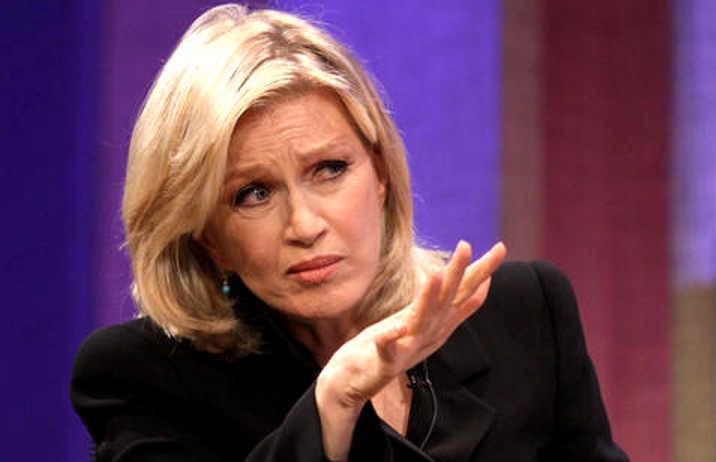
It could still be wrong. Trailers have been misleading before.
The interview is tonight at 10:00 on ABC. Our Main Posters Kermit and Media Watcher both have tips that could still win Diane Sawyer Pulitzer Prizes.
- Media Watcher: Diane Sawyer Interview With Amanda Knox: How To Push Back Against The False Claims And Emotion
- Kermit Powerpoint: Diane Sawyer’s Very Tough Interview With Amanda Knox: ABC Kindly Shares A Sneak Preview!
Here’s hoping. Even for Amanda Knox, our advice is usually the best. We’ll carry some sort of report on this tomorrow.
Tuesday, August 14, 2012
Giuseppe Castellini Speaks Up For A “Kind Homeless Man Of Many Aspects”
Posted by Jools
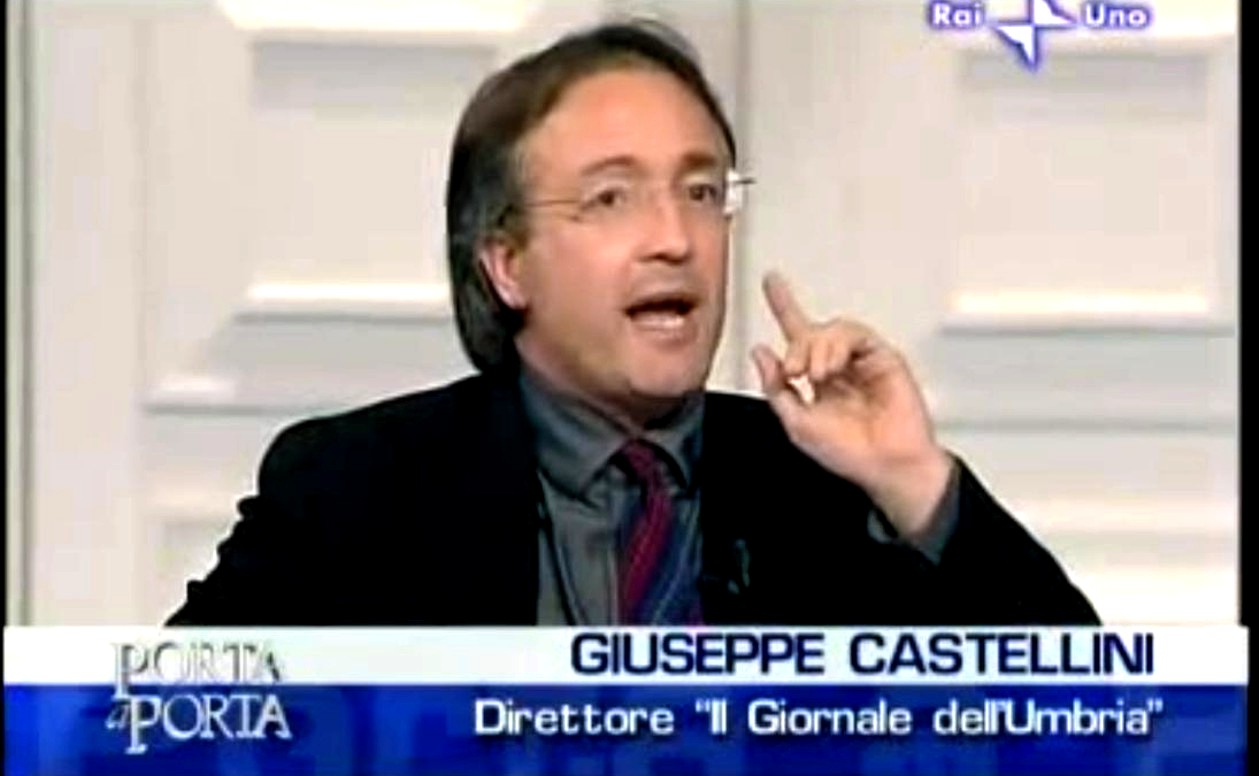
Giuseppe Castellini (above) is the editor of the Journal of Umbria in Perugia. Throughout the case he and his various reporters have done amazing, fearless work.
Today he writes movingly about the sad passing in prison of the honest and brave free spirit Antonio Curatolo, who had been charged during the appeal on a minor eight-year-old charge, apparently at someone’s insistence.
Our lives crossed on the path of the tragic murder of Meredith Kercher. And, somehow, we were no longer separated. Even though, rather than crossing paths, in time they’ve run parallel courses. Up to Friday, when death took him away, at the age of 56. And in his passing we (I speak in the plural because the same sentiment is felt by Francesca Bene, Luca Fiorucci and Antioco Fois, the colleagues who have been following the Meredith case and who met him), we feel deeply saddened.
Antonio Curatolo was no saint. But he had his candour, his naturalness, his humanity and his inner rectitude. Sometimes, I felt he was perhaps dissociated. The homeless romantic and anarchic that reads a lot and has a self-taught culture, living on the edge of society by choice, but who “struggles along” not always in a limpid way. A stray cat, clever and naïve at the same time. Tough and kind, profoundly honest, and at the same time illicit.
I remember when we were informed that a homeless man told someone (who then informed us) that he had seen on the night of the murder Amanda and Sollecito in the Piazza Grimana in Perugia, when as usual he was reading while sitting on a bench in the piazza. The story is well known: Amanda and Sollecito are at the edge of the basketball court, and Raffaele sometimes gets up and leans over the guard rail.
An important testimony, because they had said they were asleep at that time. I remember the contact, the meeting, making him repeat continuously until he was exhausted, what he had seen. Trying to make him contradict himself, to see if what he was saying was true.
A good relationship was born in those days. We spoke about other things apart from the Meredith case, things in general. We got to know each other, we talked about our lives, so many things. And, eventually, it was not very difficult to convince him to tell the investigators what he had told us.
Even though we had to insist (with him, but also with the other witnesses that we found) on surpassing that anti-State Italian mentality in which everyone goes about his business, and that if you rather trust the State you’ll end up in trouble. He testified, and since his testimony was very important (he was defined by the media, with a bit of exaggeration, the “super-witness”), he was “grilled” very thoroughly.
But he essentially repeated the same story. So much so that the defence teams of Amanda and Raffaele, in the end they stirred in the direction of Curatolo maybe having seen the two youngsters, but not on the night of the murder. His version fully convinced the GUP Judge Micheli (who pointed out that no one could dare question his story because of the mere fact that Antonio had chosen an unusual way of life) and also convinced the judges of the First Instance trial.
Not those judges of the appeal, though, according to whom all the witnesses - especially if found by journalists ““ were either mythomaniacs, or were prompted to exaggerate by the suppose desire at all costs for a journalistic scoop by reporters (showing, if I may say so myself, a strong cultural retardation of the judges and a very provincial point of view - far from the reality ““ toward the print press and, more generally, media).
Antonio, as mentioned, was not a saint. His relationship with drugs not only bears witness to his admission that he was a heroin addict, but also the legal troubles related to possession of drugs with intent to sell. An accumulation of small penalties that brought him under house arrest and in prison. Although he proclaimed his innocence. The last time I saw him, some months ago, was when I met him in the street and I accompanied him to the small flat he had rented in Corso Cavour. To complete the house arrest penalty, he told me.
But seeing him enter into that small apartment, after seeing him in the cardboard houses that he was building here and there, gave me the sad impression of a little bird entering a birdcage.
In short, I loved him, despite some aspects of his life. When I saw him we smiled. And they were smiles of men sincere with each other. I had affection for him. His sins, I’m sure, have been forgiven.
May the earth of the grave rest lightly on you, Antonio.
Sunday, February 19, 2012
HarperCollins: A Commendably Balanced Report By The UK Daily Telegraph’s Iain Hollingshead
Posted by Peter Quennell
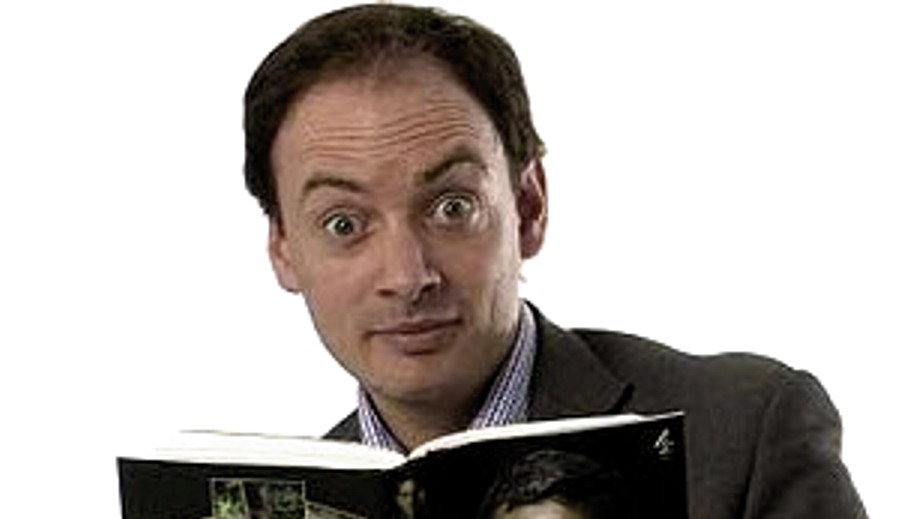
Iain Hollingshead has written a fair and balanced piece in the Daily Telegraph. It contains quite a few notes of caution for HarperCollins:
1) Iain Hollingshead has this restrained Anne Bremner comment from her side though it fails to mention the million-dollar-plus PR campaign that has so many people addled on the real evidence; a pity Iain Hollingshead didnt press her.
“No one here has lost sight of the enormity of the fact that Meredith was killed,” says Anne Bremner, a Seattle-based lawyer and a spokeswoman for the Friends of Amanda Support Group. “But there’s widespread belief in Amanda’s innocence. And when something horrible happens, people all over the world are interested in how you get through it.”
Something horrible happened to Meredith too, of course - and she didn’t get through it. Anne Bremner might press Amanda Knox to make sure to answer in her book the several hundred open questions.
2) Then Iain Hollingshead quotes a London agent who is saying, like other agents and publishers, that HarperCollins sure seems to have taken on a risky publishing venture:
A positive balance sheet is far from guaranteed, however. “I think it’s very risky money,” says Ed Victor, the London-based literary agent whose clients range from Keith Richards to Alastair Campbell and Frederick Forsyth. “But all advances at that level are risky. A lot will depend on whom they hire as the collaborator. It has to be written well.”
3) Also Iain Hollingshead points out what many others have previously pointed out which is that that Knox is not really known for good prose or interesting writing:
HarperCollins hasn’t released the name of the ghostwriter, but one imagines they will have their work cut out. Not only is the book scheduled for publication early next year, they will also have to tread the fine line of polishing Knox’s prose without losing her voice. Although Knox is said to have harboured long-standing dreams of becoming a writer, extracts from her prison diaries ““ some of which were given to investigators in an attempt to clear her name and were later leaked to newspapers ““ suggest that she has a little way to go. One poem read: “Do you know me? Open your eyes and see that when it is said I am an angel, or I am a devil, or I am a lost girl, recognise that what is really lost is: the truth!”
By the way, Mr Burnham of HarperCollinws is widely quoted as saying that Amanda Knox’s side of it is the only one still to come out. He seems to think that her side of it is still a mystery, and that the world is holding its breath.
Really?!
She seems to be one of the most widest quoted perps or suspected perps or non-perps in all history. In fact, she talked so much in the early days that her own lawyers had to publicly caution her to stop piling wrong explanations on wrong explanations.
There are her letters and her emails and her diaries and her notes to police and prosecutors. Plus long quotes from her in books by for example Rocco Girlanda. Plus her two full days on the witness stand. Plus half a dozen major statements to the trial court and appeal court. Plus a few hundred quotes from her family on her behalf. Plus her whole raft of alibis.
Often (when her parents and lawyers are not shushing her) she seems to be digging herself in deeper. Which elements of her story does Mr Burnham think we are all waiting for?
4) Also (although Iain Hollingshead fails to mention John Kercher’s book due in April and may not know about it) he points out that Meredith is the real victim in this case and a very sympathetic one especially in the UK.:
In the British market, Knox’s book will face far greater challenges than the quality of her ghosted prose. “I don’t think the book will be huge here because a lot of British sympathies are with the British victim,” says Victor.
5) Also Iain Hollingshead points out that when there is a sympathetic real victim there is little evidence that the perp or framed perp (dont they all claim they are framed?!) sells a lot of books:
The interest in the O”‰J Simpson case, for example, did not lead to good sales for his book, If I Did It. And while many pundits are comparing Knox’s book to Jaycee Dugard’s A Stolen Life, the memoir of the Californian girl held against her will for 18 years which has sold more than a million copies since last July, Victor thinks the comparison unhelpful. “She was the victim of a crime, not the putative perpetrator of a crime,” he says. “And that’s a big difference. You could say she was the victim of a miscarriage of justice ““ but so are a lot of people.”
6) And Iain Hollingshead shows us that Andrew Gumbel, Sollecito’s ghost writer, is pretty uninformed on the case.
We will now be able to watch him having a tough time writing on the hard evidence and the fair Italian system and the real character of the druggie loner Sollecito. Assuming that Mr Gumbel hasn’t made up his mind:
“The book will be a lot of things: a love story, a harrowing description of an innocent young man in prison, a full-blooded Italian family drama, and a legal thriller,” says Gumbel. “But these are not the only reasons I got involved: what happened to Raffaele and Amanda was inexcusable and unconscionable and my intention is to get to the bottom of exactly why they were targeted.”
Gumbel denies he’s cashing in on a brutal murder. “I know that, in Raffaele’s case, no day has gone by without him thinking of Meredith and the hell her family has gone through,” he says. “We are not ‘cashing in’ on her death, but rather illuminating the way the Italian police and judiciary compounded the tragedy by throwing two young people into prison for no good reason. Their stories ““ both their stories ““ deserve to be heard and I believe it is important that they are.”
Cashing in on Meredith’s death? No, the thought never even occurred to us. Image of the accusatory and under-researched Mr Gumbel below. Keep on his tail Mr Hollingshead.
7) We would have liked Iain Hollingshead to touch on the risks of calunnia for HarperCollins, but to be fair to him it is doubtful he knows what in the very fair Italian system that defense for those unfairly attacked means.
Mr Burnham and Mr Gumbel seem to be setting themselves up nicely to find out.
[Below: Sollecito ghost writer Andrew Gumbel; and Sollecito book agent Sharlene Martin]


